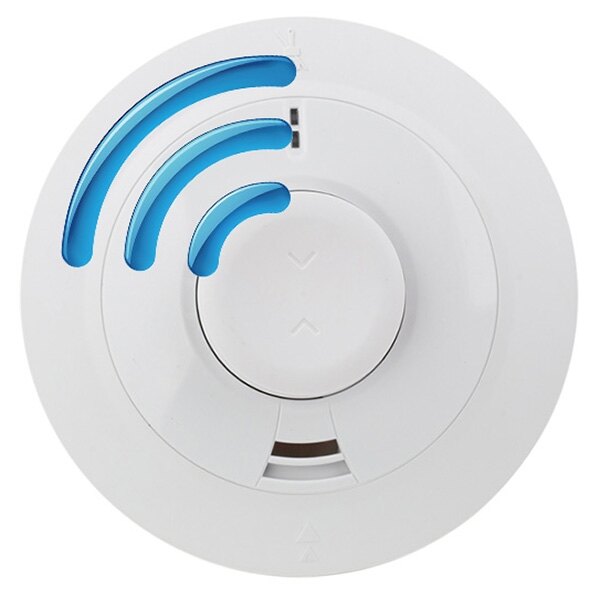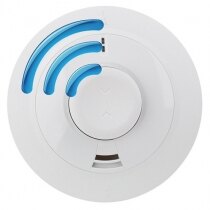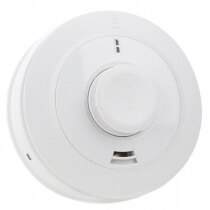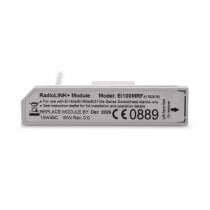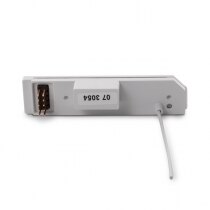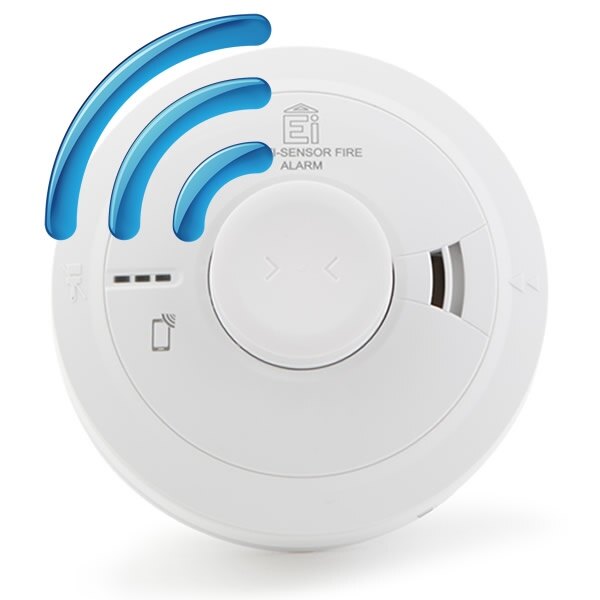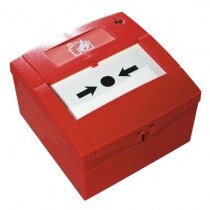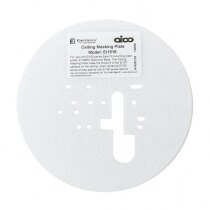-
Contact
Sales & Customer Service
0800 612 6537 support@safelincs.co.uk Live ChatDelivery Enquiries
0800 077 6149 - Resources
Fire & Safety Solutions
CALL OUR TEAM NOW 0800 612 6537
Lines open today 8am - 6pm
Quick Delivery
From £4.19 inc VAT
Live Chat - Online
Instant help & Advice
Trade Discounts
and exclusive pricing
0% Credit Available
Open an account now
5 Star Customer Feedback
Mains Radio-Interlinked Combined Optical Smoke & Heat Alarm with Self-Charging 10 Year Back-up - Aico Ei2110eRF
Discontinued Product
This product has been discontinued.
alternative product
Mains Radio-Interlinked Smoke and Heat Alarm with Back-up - Ei3024RF
- Power: 230V mains powered with back-up battery
- Backup Battery: Self-charging battery
- Warranty: 5 year warranty
- Combined alarm: both an optical smoke, and heat sensor
- Hybrid interlinking with up to 12 compatible devices
- AudioLINK - extract real time data to your smart phone
- Kitemarked to BS EN 14604: 2005 (smoke)
- Kitemarked to BS 5446-2: 2003 (heat)
- Also suitable for both the Welsh and Scottish 2022 legislation
£127.87 inc VAT
£106.56 ex VAT
Product Overview
Interlink
Technical Data
FAQs (4)
This alarm is the radio-interlinked version of the Ei2110e, a multi-sensor fire alarm that contains two separate sensing elements – optical and heat. As the unit monitors two different by-products of fires (smoke and temperature), its response to all types of fire is vastly improved over traditional single sensor alarms and reduces the number of false alarms in the premises.
- Power: 230V mains powered with back-up battery
- Backup Battery: Self-charging lithium battery
- Warranty: 5 year warranty
- Kitemarked to BS EN 14604: 2005 and CE marked
- Suitable for installations complying to BS 5839-6: 2019 Grade D1
- Each unit consists of a radio-frequency module and the Ei2110e alarm sensor
- Suitable for living rooms, bedrooms, hallway, landings (not kitchen or garage)
- Requires no cables between units
- Can be powered from the nearest light fitting
- A maximum of 12 alarms can be interlinked
- Supplied RadioLINK module simply plugs into the back of the alarm
- Built-in radioLINK repeater function allows for the RF signal to work around obstructions
- RF range: 150 metres in free space and up to 30 metres in buildings
- Alarms that can also be interlinked with include:
- Ei161eRF, EI164eRF, Ei166eRF - Provides low battery warning and features a test/hush button facility
- Unique dust compensation feature (the alarm automatically adjusts for any contamination within the optical sensor chamber)
- Supplied with fixings; 2 x screws and 2 x rawl plugs
- This alarm is also suitable for the updated 2022 Scottish legislation for fire alarms in homes
Please Note: These units use the radio-interlink frequency 868.499MHz. This bandwidth is restricted for safety products, therefore the chances of interference should be limited.
The table below shows all the units that can interlink with the EI2110ERF.
Smoke and Heat Alarms - Radio
|
Model Number
|
Type of Unit
|
Type of Interlink
|
| Ei3014 / Ei3014RF | Mains Powered Heat Alarm - Sealed Lithium | Hardwire or Radio Interlink |
| Ei3016 / Ei3016RF | Mains Powered Optical Smoke Alarm - Sealed Lithium | Hardwire or Radio Interlink |
| Ei3024 / Ei3024RF | Mains Powered Optical & Heat Alarm - Sealed Lithium | Hardwire or Radio Interlink |
| Ei3028 / Ei3028RF | Mains Powered Heat & Carbon Monoxide Alarm - Sealed Lithium | Hardwire or Radio Interlink |
| Ei2110e / Ei2110eRF | Mains Powered Multi Sensor Smoke & Heat Alarm - Sealed Lithium | Hardwire or Radio Interlink |
| Ei161e / Ei161eRF | Mains Powered Ionisation Smoke Alarm - Sealed Lithium | Hardwire or Radio Interlink |
| Ei164e / Ei164eRF | Mains Powered Heat Alarm - Sealed Lithium | Hardwire or Radio Interlink |
| Ei166e / Ei166eRF | Mains Powered Optical Smoke Alarm - Sealed Lithium | Hardwire or Radio Interlink |
| Ei141 / Ei168RC141RC | Mains Powered Ionisation Alarm - 9V Alkaline | Hardwire or Radio Interlink |
| Ei144 / Ei168RC144RC | Mains Powered Heat Alarm - 9V Alkaline | Hardwire or Radio Interlink |
| Ei146 / Ei168RC146RC | Mains Powered Optical Smoke Alarm - 9V Alkaline | Hardwire or Radio Interlink |
| Ei3100RF | Battery Powered Ionisation Smoke Alarm - 9V Alkaline | Radio Interlink |
| Ei3103RF | Battery Powered Heat Alarm - 9V Alkaline | Radio Interlink |
| Ei3105RF | Battery Powered Optical Smoke Alarm - 9V Alkaline | Radio Interlink |
| Ei603RF | Battery Powered Heat Alarm - Sealed Lithium | Radio Interlink |
| Ei650RF | Battery Powered Optical Smoke Alarm - Sealed Lithium | Radio Interlink |
Carbon Monoxide Alarms
|
Model Number
|
Type of unit
|
Type of interlink
|
| Ei3018 / Ei3018RF | Mains Powered Carbon Monoxide Alarm - Sealed Lithium | Hardwire or Radio Interlink |
| Ei3028 / Ei3028RF | Mains Powered Heat & Carbon Monoxide Alarm - Sealed Lithium | Hardwire or Radio Interlink |
| Ei262 | Mains Powered Carbon Monoxide Alarm - Sealed Lithium | Hardwire or Radio Interlink |
| Ei261 | Mains Powered Carbon Monoxide Alarm - Sealed Lithium | Hardwire Interlink |
| Ei208WRF | Battery Powered Carbon Monoxide Detector - Sealed Lithium | Radio Iinterlink |
Ancillary Products
|
Model Number
|
Type of unit
|
Type of interlink
|
| Ei170RF | Mains Powered Strobe and Vibration Pad for the Hearing Impaired - Sealed Lithium | Radio Interlink |
| Ei407 | Battery Powered Manual Call Point - Sealed Lithium | Radio Interlink |
| MCP401RC | Mains Powered Manual Call Point | Hardwire Interlink |
| Ei450 | Battery Powered Fire and CO Alarm Controller - Sealed Lithium | Radio Interlink |
| Ei411H | Battery Powered Locate, Silence & Test Control Switch - Sealed Lithium | Radio Interlink |
| Ei410TRF | Battery Powered Test Remote - Sealed Lithium | Radio Interlink (Ei3100RF Series) |
| Ei1529RC | Mains Powered Locate, Silence & Test Control Switch | Hardwire Interlink |
| Ei159 | Mains Powered Smoke Alarm Locator Switch | Hardware Interlink |
| Ei428 | Mains Powered 5A Relay Module | Radio Interlink |
| Ei128R | Mains Powered 5A Relay Module | Hardwire Interlink |
| Ei128RBU | Mains Powered 5A Relay Module with Lithium Backup Battery | Hardwire Interlink |
| Y03 | Mains Powered Multi Frequency Sounder | Hardwire Interlink (via relay) |
| SAB300C | Mains Powered Flashing Xenon Strobe (Clear) | Hardwire Interlink (via relay) |
| SAB300R | Mains Powered Flashing Xenon Strobe (Red) | Hardwire Interlink (via relay) |
Wiring Explained
Mains powered Ei Electronics smoke and heat alarms require a 230V AC power supply and up to 12 alarms can be hardwire interlinked in one system.
To obtain a mains power supply, each alarm can be connected to the nearest lighting circuit using 2 core and earth cable with a separate, dedicated interlink cable connecting alarms where applicable. However, if possible it is recommended that any alarms connected via interlink cable are all powered from a dedicated circuit from the distribution board using 3 core and earth cable for safety during maintenance, as the interlink cable will carry power from live alarms on other power circuits. Please see the diagram below:-
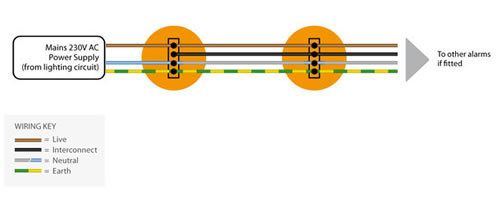
| Product Code | EI2110ERF |
|---|---|
| Alternative Product Codes | Ei2110, Ei2110e, Ei2110eRF |
| Brand | EI Electronics |
| Back-Up Battery | Self-Charging Lithium |
| Dimensions (HxDia) | 152x50mm |
| Operating Temperature | 0°C to 40°C |
| Relative Humidity | 15% to 95% |
| Sound Output | 85dB |
| Warranty | 5 Years |
| Weight | 0.32kg |
| Product Datasheets |
Q. Does the Ei2110 multi sensor model need to be fitted by a qualified electrician?
A.
We would always recommend a qualified electrician to fit these mains powered smoke alarms for you .
Q. Does this alarm conform to BS 5446 part 1 as recommended by the Fire Service?
A.
BS 5446-1:2000 was withdrawn in 2008 and replaced by BS EN 14604:2005 to conform with European standards. All of our alarms containing a smoke detector (smoke only, smoke & heat, smoke & CO) are fully compliant with BS EN 14604:2005. They also comply with any other relevant standards relating to their other detection capabilities.
Q. What sort of smoke alarm system would I need to install for a HMO?
A.
BS 5839-6 recommends that one or two storey HMOs with an individual floor area of no more than 200sqm (not the total of both floors) should have a Grade D smoke alarm system installed. Grade D refers to mains powered smoke alarms with a back up battery power supply. The alarms can be interlinked either by wire or by radio signal and the system does not require a separate fire alarm panel. For HMOs of 3 storey or higher, a Grade A panel system would need to be installed. This can cover the whole of the building, or can be used just for the communal areas with a separate Grade D system installed for the individual dwellings. For both applications, the level of cover should be a minimum of LD3 (in all escape routes) but this may change according to the fire risk assessment.
Q. For mains powered Aico smoke and heat alarms, when the electricity supply fails and the back up battery takes over, please can you tell me how long the battery will last in this situation?
A.
For mains powered Aico alarms with a new, fully charged lithium back up battery, the battery would last approx. 3-6 months without a mains supply. For mains powered Aico alarms with a standard alkaline back up battery, the battery would last up to a year without mains supply. If the alarm has been installed with an Ei168RC radio frequency base, please note that the Ei168RC back up battery would last approx 2 months if the power fails.
Looking for more information?
If you have any questions or would like more information about this product you can ask one of our specialists.
Live Chat Available Now
Direct Telephone
01507 464181




















